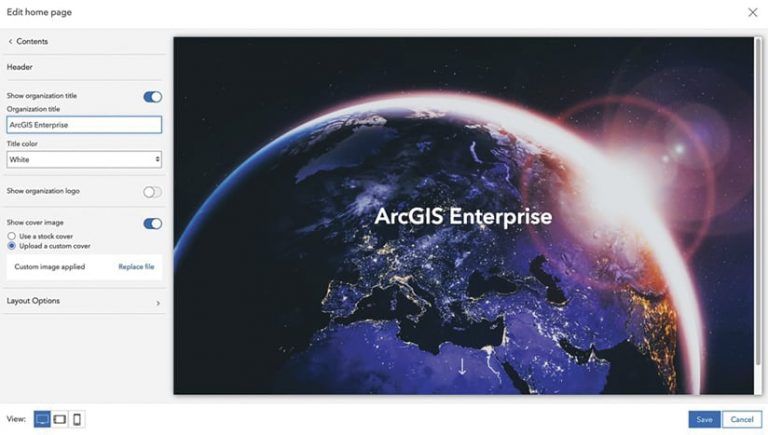With the Q2 2021 release of ArcGIS in May, ArcGIS Enterprise gained several exciting and long-awaited features that provide users with needed updates and better tools for collaboration.
One of the most valuable updates to ArcGIS Enterprise is shared editing (two-way sync). This allows for distributed collaboration, enabling users to share data edits and sync content across ArcGIS Enterprise deployments and with ArcGIS Online. Additionally, ArcGIS Enterprise now supports hosted layers, branch versioned layers, and nonversioned layers with archiving enabled.
Data management was also enhanced in ArcGIS Enterprise. For example, users can now append data—including CSV and Microsoft Excel files, shapefiles, and GeoJSON files—to hosted feature layers. They can also choose whether to add or update features in the existing layer or overwrite the layer.

A new home page editor for ArcGIS Enterprise is beneficial to users who want to customize their home pages, choose different layouts, and incorporate more branding. With the editor, users can make their home pages responsive for desktop and mobile devices, display a full-screen cover image, rearrange the layout of the page, and adjust the tone to either light or dark. Edits can even be reviewed as they’re being made.
New administrative reports now provide a helpful overview of content and member activity. For example, they let administrators see how many web maps their organizations have, how many were created within a specific time frame, and which items need to be updated. The reports also allow administrators to export these ArcGIS Enterprise item and member inventories to CSV files.
In 2022, ArcMap software-based runtime components will be removed from ArcGIS Enterprise, affecting services that are published from and run in ArcMap. So this latest release of ArcGIS Enterprise incorporates migration tooling to help users prepare for the change. The UpdateArcMapServices tool is now included with ArcGIS Server, which enables users to do inventories or bulk migrations of service runtimes ahead of next year’s removal. Users can also migrate services individually through the ArcGIS Server Manager. Any other services, however, will need to be migrated manually.
Finally, for eligible customers seeking a containerized deployment option, ArcGIS Enterprise on Kubernetes is now available. To find out more about this new cloud-native offering, see “Esri Establishes Closer Ties with the Developer Community.” Users who are experienced in using Kubernetes can reach out to their Esri representatives to get more information.
Please note, this is a short-term support release that builds on previous releases of ArcGIS Enterprise and includes new features, apps, and improved functionality to the product. For more details on any of these topics, visit ArcGIS Blog.

